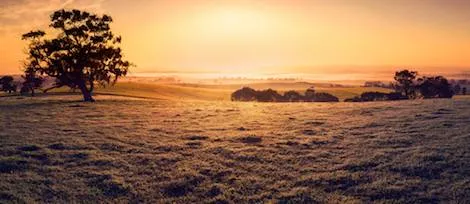
100 Must-Read Australian Books
This content contains affiliate links. When you buy through these links, we may earn an affiliate commission.
Beaches, sunshine, and all sorts of creatures that will kill you if given half the chance. This is typically what people imagine when they think ‘Australia’ and technically they wouldn’t be wrong. We do have a lot of beaches. A lot of sun. And quite a large number of poisonous and venomous creatures that will kill you if you aren’t careful. But there’s a lot more to this dry, large continent-island-country than that.
There are already a lot of lists out there about Australian classics you should read, or great Australian novels, or the most popular books in Australia. What I’ve tried to do with this list is to think of this as a curriculum on Australia: if you were to take a crash course and wanted to learn everything about the country, what would you read? I’ve included bestsellers and classics, books by Australians, about Australia, and/or set in Australia. There are books about indigenous Australians, history, politics, geography, sport, society, and culture. There are literary award winners but also lighter books. And there are also some of my most favourite and treasured books from when I was a kid, because what good is a list like this without some nostalgia?
Welcome to the sunburnt country, and happy reading!
Non-fiction
Indigenous Australia
 Published in 1987, My Place is an Australian classic and one of the earlier pieces of indigenous Australian literature: “Looking at the views and experiences of three generations of indigenous Australians, this autobiography unearths political and societal issues contained within Australia’s indigenous culture. Sally Morgan travelled to her grandmother’s birthplace, starting a search for information about her family. She uncovers that she is not white but Aborigine – information that was kept a secret because of the stigma of society.”
Published in 1987, My Place is an Australian classic and one of the earlier pieces of indigenous Australian literature: “Looking at the views and experiences of three generations of indigenous Australians, this autobiography unearths political and societal issues contained within Australia’s indigenous culture. Sally Morgan travelled to her grandmother’s birthplace, starting a search for information about her family. She uncovers that she is not white but Aborigine – information that was kept a secret because of the stigma of society.”
 Crabb is a political commentator and writer. “The Wife Drought is about women, men, family and work. Written in Annabel Crabb’s inimitable style, it’s full of candid and funny stories from the author’s work in and around politics and the media, historical nuggets about the role of ‘The Wife’ in Australia, and intriguing research about the attitudes that pulse beneath the surface of egalitarian Australia.”
Crabb is a political commentator and writer. “The Wife Drought is about women, men, family and work. Written in Annabel Crabb’s inimitable style, it’s full of candid and funny stories from the author’s work in and around politics and the media, historical nuggets about the role of ‘The Wife’ in Australia, and intriguing research about the attitudes that pulse beneath the surface of egalitarian Australia.”
 Parkes is a small town in central New South Wales, about a six hour drive from Sydney. Since 1993, it has hosted the world’s second largest Elvis festival, and John Connell and Chris Gibson have been researching the festival since the early 2000s. They have presented their work at academic conferences, written report, and published papers and book chapters on their research. Outback Elvis is a delightful, easy-to-read book about Parkes, the festival, and their research.
Parkes is a small town in central New South Wales, about a six hour drive from Sydney. Since 1993, it has hosted the world’s second largest Elvis festival, and John Connell and Chris Gibson have been researching the festival since the early 2000s. They have presented their work at academic conferences, written report, and published papers and book chapters on their research. Outback Elvis is a delightful, easy-to-read book about Parkes, the festival, and their research.
 In keeping with the immigration theme, this is the story of another refugee who arrived on the shores of Australia. Ahn Do is a comedian, author, and TV personality whose family left war-torn Vietnam in search of a better life: “The Happiest Refugee tells the incredible, uplifting and inspiring life story of one of our favourite personalities. Tragedy, humour, heartache and unswerving determination – a big life with big dreams. Anh’s story will move and amuse all who read it.”
In keeping with the immigration theme, this is the story of another refugee who arrived on the shores of Australia. Ahn Do is a comedian, author, and TV personality whose family left war-torn Vietnam in search of a better life: “The Happiest Refugee tells the incredible, uplifting and inspiring life story of one of our favourite personalities. Tragedy, humour, heartache and unswerving determination – a big life with big dreams. Anh’s story will move and amuse all who read it.”
 Pippos is a journalist and writer, and this book is about sexism in sport. “Pippos charts a powerful awakening across Australian life; from suburban footy fields to stadium cage fights, female athletes are changing the status quo through fierce determination and undeniable performances.”
Pippos is a journalist and writer, and this book is about sexism in sport. “Pippos charts a powerful awakening across Australian life; from suburban footy fields to stadium cage fights, female athletes are changing the status quo through fierce determination and undeniable performances.”
 This is a short story collection that received widespread critical acclaim. Catherine Cole writes of this collection, “each story bears the hallmarks of a carefully thought out, well-crafted and edited reflection on the short story form and the artistic skill necessary in the successful realisation of it. As well as its fine writing, its carefully drawn characters, the use of place as both a locating medium and a metaphor for existential conflict, it also raises questions about the commonalities and the distinctiveness of lived experience.”
This is a short story collection that received widespread critical acclaim. Catherine Cole writes of this collection, “each story bears the hallmarks of a carefully thought out, well-crafted and edited reflection on the short story form and the artistic skill necessary in the successful realisation of it. As well as its fine writing, its carefully drawn characters, the use of place as both a locating medium and a metaphor for existential conflict, it also raises questions about the commonalities and the distinctiveness of lived experience.”
 Josephine Moon’s latest book. “Maria Lindsey is content. She spends her solitary days tending her bees and creating delicious honey products to fund orphaned children. A former nun, her life at Honeybee Haven has long been shaped by her self-imposed penance for terrible past events. But the arrival of two letters heralds the shattering of Maria’s peaceful existence.”
Josephine Moon’s latest book. “Maria Lindsey is content. She spends her solitary days tending her bees and creating delicious honey products to fund orphaned children. A former nun, her life at Honeybee Haven has long been shaped by her self-imposed penance for terrible past events. But the arrival of two letters heralds the shattering of Maria’s peaceful existence.”
 This book is wonderful. A great portrait of Australian primary schools and the friendships, rivalries, and jealousies that can occur at that age. I love the main character and the writing. Loved the book when I first read it in primary school, and still love it twenty years later.
This book is wonderful. A great portrait of Australian primary schools and the friendships, rivalries, and jealousies that can occur at that age. I love the main character and the writing. Loved the book when I first read it in primary school, and still love it twenty years later.
- Am I Black Enough For You? by Anita Heiss
- My Place by Sally Morgan
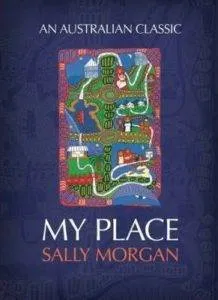 Published in 1987, My Place is an Australian classic and one of the earlier pieces of indigenous Australian literature: “Looking at the views and experiences of three generations of indigenous Australians, this autobiography unearths political and societal issues contained within Australia’s indigenous culture. Sally Morgan travelled to her grandmother’s birthplace, starting a search for information about her family. She uncovers that she is not white but Aborigine – information that was kept a secret because of the stigma of society.”
Published in 1987, My Place is an Australian classic and one of the earlier pieces of indigenous Australian literature: “Looking at the views and experiences of three generations of indigenous Australians, this autobiography unearths political and societal issues contained within Australia’s indigenous culture. Sally Morgan travelled to her grandmother’s birthplace, starting a search for information about her family. She uncovers that she is not white but Aborigine – information that was kept a secret because of the stigma of society.”
- Macquarie PEN Anthology of Aboriginal Literature edited by Anita Heiss and Peter Minter
- Because A White Man Will Never Do It by Kevin Gilbert
- Hey Mum, What’s a Half-Caste? by Lorraine McGee-Sippel
- The Songlines by Bruce Chatwin
- The Tyranny of Distance by Geoffrey Blainey
- Australians: A Short History by Thomas Keneally
- The Fatal Shore by Robert Hughes
- The Lucky Country by Donald Horne
- Still Lucky by Rebecca Huntley
- The Rise and Fall of Australia by Nick Bryant
- Australian Lives by Anisa Puri
- The Wife Drought by Annabel Crabb
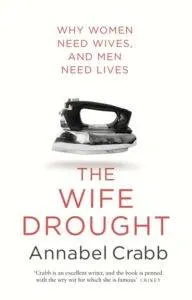 Crabb is a political commentator and writer. “The Wife Drought is about women, men, family and work. Written in Annabel Crabb’s inimitable style, it’s full of candid and funny stories from the author’s work in and around politics and the media, historical nuggets about the role of ‘The Wife’ in Australia, and intriguing research about the attitudes that pulse beneath the surface of egalitarian Australia.”
Crabb is a political commentator and writer. “The Wife Drought is about women, men, family and work. Written in Annabel Crabb’s inimitable style, it’s full of candid and funny stories from the author’s work in and around politics and the media, historical nuggets about the role of ‘The Wife’ in Australia, and intriguing research about the attitudes that pulse beneath the surface of egalitarian Australia.”
- Affluenza by Clive Hamilton
- Everywhere I Look by Helen Garner
- Down Under/In A Sunburned Country by Bill Bryson
- Rule No. 5: No Sex on the Bus by Brian Thacker
- Outback Elvis by John Connell and Chris Gibson
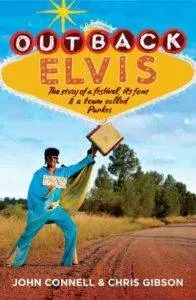 Parkes is a small town in central New South Wales, about a six hour drive from Sydney. Since 1993, it has hosted the world’s second largest Elvis festival, and John Connell and Chris Gibson have been researching the festival since the early 2000s. They have presented their work at academic conferences, written report, and published papers and book chapters on their research. Outback Elvis is a delightful, easy-to-read book about Parkes, the festival, and their research.
Parkes is a small town in central New South Wales, about a six hour drive from Sydney. Since 1993, it has hosted the world’s second largest Elvis festival, and John Connell and Chris Gibson have been researching the festival since the early 2000s. They have presented their work at academic conferences, written report, and published papers and book chapters on their research. Outback Elvis is a delightful, easy-to-read book about Parkes, the festival, and their research.
- The Bush by Don Watson
- Tracks by Robyn Davidson
- My Story by Julia Gillard
- Recollections of a Bleeding Heart by Don Watson
- On Not Speaking Chinese by Ien Ang
- Songs of a War Boy by Deng Thiak Adut
- Who Do You Think I Am? by Yassmin Abdel-Magied
- The Happiest Refugee by Ahn Do
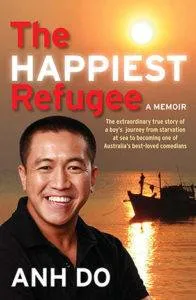 In keeping with the immigration theme, this is the story of another refugee who arrived on the shores of Australia. Ahn Do is a comedian, author, and TV personality whose family left war-torn Vietnam in search of a better life: “The Happiest Refugee tells the incredible, uplifting and inspiring life story of one of our favourite personalities. Tragedy, humour, heartache and unswerving determination – a big life with big dreams. Anh’s story will move and amuse all who read it.”
In keeping with the immigration theme, this is the story of another refugee who arrived on the shores of Australia. Ahn Do is a comedian, author, and TV personality whose family left war-torn Vietnam in search of a better life: “The Happiest Refugee tells the incredible, uplifting and inspiring life story of one of our favourite personalities. Tragedy, humour, heartache and unswerving determination – a big life with big dreams. Anh’s story will move and amuse all who read it.”
- Where the Sea Takes Us by Kim Huynh
- Mao’s Last Dancer by Li Cunxin
- The Good Girl of Chinatown by Jenevieve Chang
- Not Quite Australian by Peter Mares
- The Hate Race by Maxine Beneba Clarke
- Not Quite Nigella by Lorraine Elliott
- One Continuous Picnic by Michael Symons
- Bold Palates by Barbara Santich
- The Captains by Malcolm Knox
- Breaking the Mould by Angela Pippos
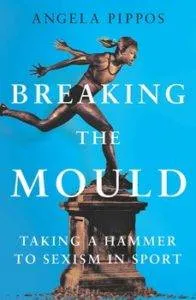 Pippos is a journalist and writer, and this book is about sexism in sport. “Pippos charts a powerful awakening across Australian life; from suburban footy fields to stadium cage fights, female athletes are changing the status quo through fierce determination and undeniable performances.”
Pippos is a journalist and writer, and this book is about sexism in sport. “Pippos charts a powerful awakening across Australian life; from suburban footy fields to stadium cage fights, female athletes are changing the status quo through fierce determination and undeniable performances.”
- Born to Run by Cathy Freeman
- This is Me by Ian Thorpe
- Shelter by Kara Rosenlund
- The Forever House edited by Cameron Bruhn and Katelin Butler
- QF32 by Richard De Crespigny
- The Men Who Killed Qantas by Matthew Benns
- The Doctor by Karl Kruszelnicki
- The Case Against Fragrance by Kate Grenville
- Why Aren’t We Dead Yet? by Idan Ben-Barak
- Sins of the Brother by Mark Whittaker and Les Kennedy
- Someone Else’s Daughter by Julia Sheppard
- The True History of the Kelly Gang by Peter Carey
- The Secret River by Kate Grenville
- Burial Rites by Hannah Kent
- That Deadman Dance by Kim Scott
- Picnic at Hanging Rock by Joan Lindsay
- People of the Book by Geraldine Brooks
- My Brilliant Career by Miles Franklin
- The Narrow Road to the Deep North by Richard Flanagan
- The Swan Book by Alexis Wright
- Home by Larissa Behrendt
- The Boat by Nam Le
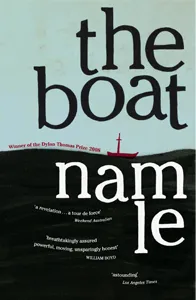 This is a short story collection that received widespread critical acclaim. Catherine Cole writes of this collection, “each story bears the hallmarks of a carefully thought out, well-crafted and edited reflection on the short story form and the artistic skill necessary in the successful realisation of it. As well as its fine writing, its carefully drawn characters, the use of place as both a locating medium and a metaphor for existential conflict, it also raises questions about the commonalities and the distinctiveness of lived experience.”
This is a short story collection that received widespread critical acclaim. Catherine Cole writes of this collection, “each story bears the hallmarks of a carefully thought out, well-crafted and edited reflection on the short story form and the artistic skill necessary in the successful realisation of it. As well as its fine writing, its carefully drawn characters, the use of place as both a locating medium and a metaphor for existential conflict, it also raises questions about the commonalities and the distinctiveness of lived experience.”
- Questions of Travel by Michelle de Kretser
- The Slap by Christos Tsiolkas
- The Light Between Oceans by M. L. Stedman
- All That I Am by Anna Funder
- Jessica by Bryce Courtenay
- The Harp in the South by Ruth Park
- Cloudstreet by Tim Winton
- The Natural Way of Things by Charlotte Wood
- Jasper Jones by Craig Silvey
- A Fraction of the Whole by Steve Toltz
- My Brother Jack by George Johnston
- The Permanent Resident by Roanna Gonslaves
- Selection Day by Aravind Adiga
- Pavlovas and Pappadums by Nitasha Thomson
- The Beekeeper’s Secret by Josephine Moon
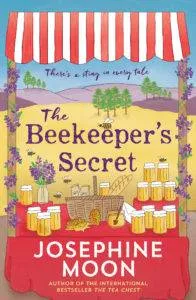 Josephine Moon’s latest book. “Maria Lindsey is content. She spends her solitary days tending her bees and creating delicious honey products to fund orphaned children. A former nun, her life at Honeybee Haven has long been shaped by her self-imposed penance for terrible past events. But the arrival of two letters heralds the shattering of Maria’s peaceful existence.”
Josephine Moon’s latest book. “Maria Lindsey is content. She spends her solitary days tending her bees and creating delicious honey products to fund orphaned children. A former nun, her life at Honeybee Haven has long been shaped by her self-imposed penance for terrible past events. But the arrival of two letters heralds the shattering of Maria’s peaceful existence.”
- Free Falling by Nicola Moriarty
- The Rosie Project by Graeme Simsion
- Three Wishes by Liane Moriarty
- Ice Station by Matthew Reilly
- The Alphabet Sisters by Monica McInerney
- Love Struck by Melanie La’Brooy
- The Secret Recipe for Second Chances by J. D. Barrett
- Bad Debts by Peter Temple
- Spirits of the Ghan by Judy Nunn
- A Distant Journey by Di Morrissey
- I Came to Say Goodbye by Caroline Overington
- Tales from Outer Suburbia by Shaun Tan
- Seven Little Australians by Ethel Turner
- Selby’s Secret by Duncan Ball
- Jodie’s Journey by Colin Thiele
- Hating Alison Ashley by Robin Klein
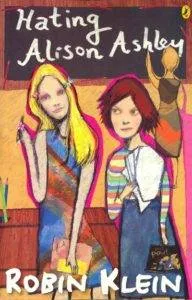 This book is wonderful. A great portrait of Australian primary schools and the friendships, rivalries, and jealousies that can occur at that age. I love the main character and the writing. Loved the book when I first read it in primary school, and still love it twenty years later.
This book is wonderful. A great portrait of Australian primary schools and the friendships, rivalries, and jealousies that can occur at that age. I love the main character and the writing. Loved the book when I first read it in primary school, and still love it twenty years later.
- 45 + 47 Stella Street and Everything That Happened by Elizabeth Honey
- Penny Pollard’s Diary by Robin Klein
- Two Weeks With the Queen by Morris Gleitzman
- Feeling Sorry for Celia by Jaclyn Moriarty
- The Book Thief by Markus Zusak
- Looking for Alibrandi by Melina Marchetta
- Does My Head Look Big in This? by Randa Abdel-Fattah









